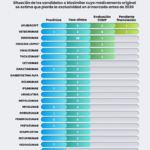We want to talk to you today about the biosimilar drugs, which are still somewhat unknown to a large part of the population. Below you have a small summary of a document published by the EGA, European Association of Generic and Biosimilar Medicines, which answers the most frequently asked questions on the subject, which you can consult in full at this link.
What is the meaning of “biosimilar”?
The term "biosimilar medicine”' denotes a biological medicinal product that is very similar to an already authorized reference medicinal product. Thus, these are medicines that are similar, but not exactly identical, to the reference products that until recently were also called biogeneric, by analogy with traditional synthetic drugs.
How is the EGA involved in the development of biosimilar medicines?
The EGA is actively interested in all issues related to medicines, including medicines derived from biotechnology. After several years of safe use of biosimilars in the European Union, EGA members have extensive clinical experience with them. Some of these members are developers of all the biosimilar products approved and marketed in the European Union to date, and many of them also have products approved in other highly regulated markets, such as Japan, Canada, Australia and the US.
Why are biosimilar medicines being introduced?
Biotechnology-derived medicines are an essential part of the medicines available to patients today, and many medicines under development are products of biotechnology. For example, 300 monoclonal antibodies are currently in development in more than 200 indications including oncology, inflammatory diseases, autoimmune diseases, metabolic and central nervous system disorders, infectious and cardiovascular diseases, and transplant rejection.
Without competition from biosimilars, the prices of originator pharmaceuticals would remain artificially high. Likewise, this competition serves to stimulate research into new original medicines. This fact is confirmed by the situation in the US, where more than 80% of the medicines used are generic medicines and where, at the same time, it is the country where more innovative medicines are developed. On the other hand, Europe has a critical need to control healthcare costs due to the aging of the population.
What is the situation in Europe regarding biosimilar medicines?
Biosimilar medicines have been a reality in the European Union for several years. The necessary legal framework for biosimilar medicines was approved in the EU on March 31, 2004, and approved by the European Commission in April 2006. All EU-approved biosimilars are subjected to the same rigorous scientific evaluation by the European Agency of Medicines (EMA) and its committees like any biological medicine. The Agency confirms through its website that each of them "has been compared and matches the reference medicine [...] in terms of quality (how it is done), safety (for example, the side effects that can occur when receiving treatment are similar) and efficacy.”
What is the approval and regulatory process for biosimilars in Europe?
All biotech medicines, including biosimilars, are evaluated by the European Medicines Agency in London (EMA), which constitutes the scientific body of the European Commission responsible for the evaluation of medicines. When the EMA evaluates the data for a biosimilar medicine, the scientific principles to ensure product quality, safety and efficacy are identical to those applied to the reference medicine with which it is being compared. Companies that develop bioequivalent medicines must also present data from a "full comparability exercise". It must be demonstrated, with a high degree of certainty, that the quality of the biosimilar medicine is very similar to that of the reference medicine.
What savings does it mean to introduce biosimilar medicines in health systems?
The improved accessibility to healthcare that could result from the use of biosimilar medicines is real. As an example, with the introduction of the EPO biosimilar in Germany, 60 million euros were saved (17% less) in the first year of the market. It has been estimated that the use of biosimilars in Germany could contribute to annual savings of €3 billion starting in 2017. By 2020 the savings through biosimilars would be more than €8 billion.
What evolution is expected in the development of biosimilar medicines?
The period between 2012 and 2017 will see many new developments regarding biosimilar medicines. One of the most significant areas is the potential for the development and approval of biosimilar monoclonal antibodies. In 2010 in Europe, 6 of the top 10 leading pharmaceuticals were monoclonal antibodies. It has been estimated that more than 45 monoclonal antibody products are marketed worldwide, with total sales of more than $40 billion.
Text partially taken and translated from the web www.medicinesforeurope.com/




